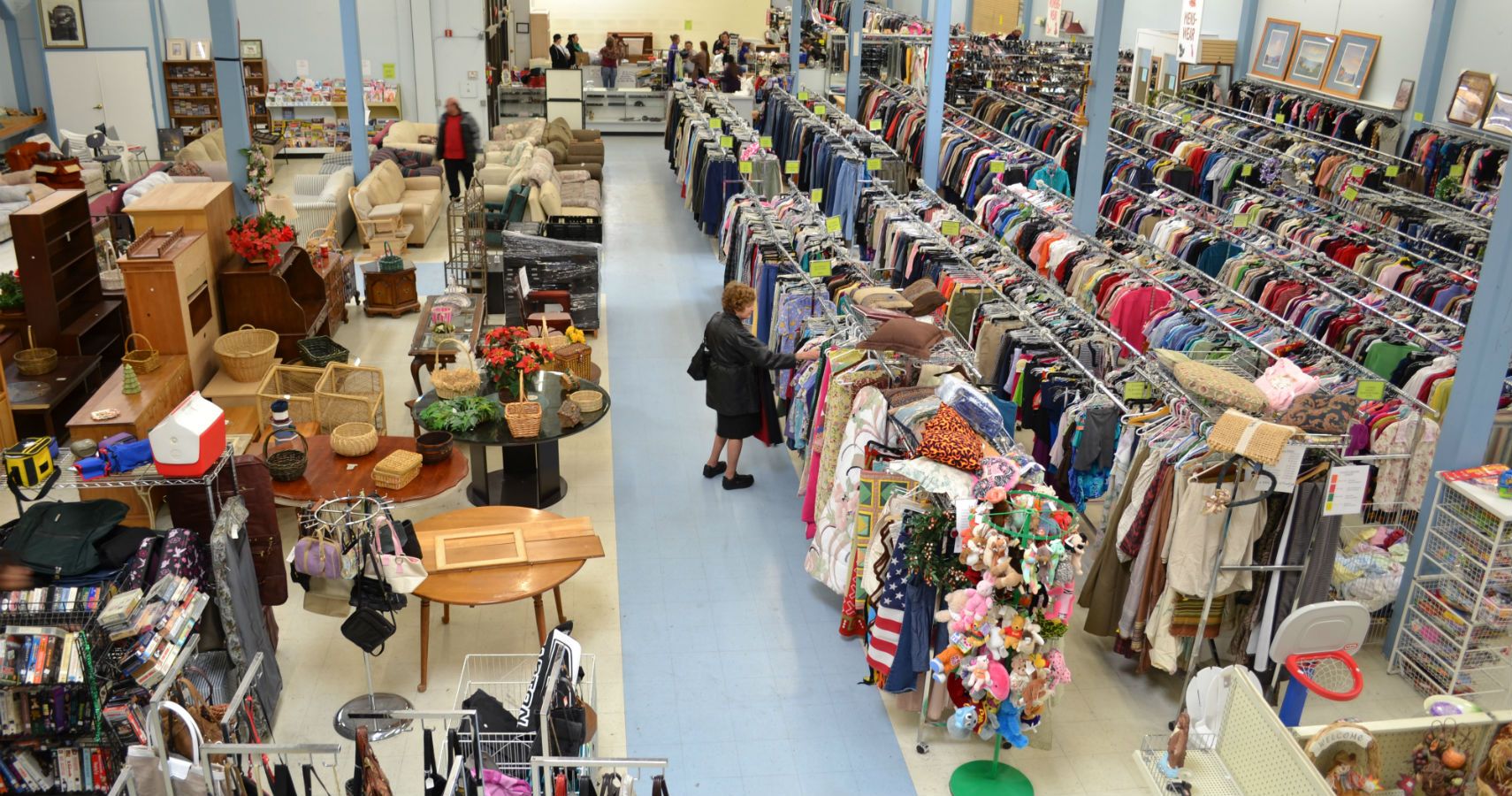Yes, I thrift. I love it - it’s something I grew up doing and I’ve found some beautiful pieces over the years. Once, I even built up quite the gorgeous full-length wool coat collection that kept me cozy and stylish for years. Of course, lots of the merchandise in thrift stores isn’t worth your time. It’s worn out or ill-fitting, and that’s why it ended up in the bargain bin. But you know what is almost never worn out? Kids’ stuff. Clothes, toys, shoes, etc. Because kids grow so quickly, their clothes never really get loads of wear and tear. This makes it way easier to thrift for my kids than it is to thrift for myself!
My reasoning goes both ways here - since I know my kids won’t be wearing any one thing for more than a few months or a year, I don’t want to invest loads of money in their everyday duds. Now, I will invest in key pieces - because I want them to last and I might be a bit more particular about their quality. Things like shoes, outerwear, sweaters, and denim - those are all well-worth buying new. But tee shirts? Shorts? Heck, anything else - pre-loved makes far more economic sense. I’m a big proponent of buying toys from thrift stores, too! Hmm….maybe that’s why my kids have so many toys?
If you thrift, you know that some of these pieces can carry quite the funk. Sometimes the person who donated the clothes was a smoker, or you just don’t trust how well they cleaned those wooden blocks. Allow me to share a few pro-tips with you that make reusing and repurposing thrifted items just a little bit less….hmmm….skeevy? I don’t know how else to say it. Just trust me, you want to really clean the stuff you’re buying at a thrift store. You have no idea where it came from, and it’s worth the effort for a nice item.
Strip Down
Ha! No, don’t get naked! I mean strip any fabric item you get from a thrift store. Curtains, blankets, pillows, and any clothing all warrant a good deep-cleaning, and stripping does just that. Some folks aren’t great at laundry and their clothes suffer for it. Stripping fabrics is quite easy - sort of a “Set it and forget it!” kind of cleaning.
In a standard-sized tub OR a standard top-loading washing machine (NOT high efficiency), add a half cup of Borax, a half cup of Washing Soda, and a half cup of strong detergent (preferably something with enzymes). I’ve been known to add a scoop of Biz to the mix to boost up the enzymatic power in my stripping soup. Fill the tub half-full (or the machine totally full) and add fabrics or clothes. Let this puppy sit for at least two hours - but you could also just leave it overnight if that’s easier. Give it a good stir every once in a while if you can manage.
When it’s done, plug your nose and drain the water. Toss everything in the washer if it isn’t already there, and wash it once or twice with strong detergent. Rest assured that all the funk that was stuck in those fibers is now in your wastewater treatment plant, and NOT in your home.
Sanitize It (Or Disinfect It. Or Clean It.)
Ok, so quick lesson in cleaning. There is a difference between clean, sanitized, and disinfected. For example, when you wash your dishes, you are cleaning them. If you sanitize something, that means you are drastically reducing the bacteria living on the item. Disinfecting an item is the highest standard. Disinfectants kill any organism - fungus, bacteria, viruses - 100% to a 6log10. That means that if your stovetop has 1 million viral cells on it, a disinfectant will kill literally all of them. Not a single viral cell will be left behind. On the other hand, sanitizing won’t kill any of the virus - only bacteria. And even then, it will reduce 1 million bacteria to 1 thousand bacteria.
All that to say: if you’re eating off of something or it’s a frequent-touch surface (like baby toys), you want to disinfect. If it’s a piece of furniture, a sanitizing spray will be more than fine. And if it’s clothing or decor? Just clean it. Nobody’s eating off of that new fall wreath for the front door.
Read the labels on cleaning products to ascertain if it will clean, sanitize, or disinfect. Make sure you leave the disinfectant on per label directions. Lysol wipes, for example, have to leave the surface wet for ten minutes to properly disinfect.
Now you’re ready to thrift!
Have you ever wondered if you could get a certain thing really clean? Ask me on Twitter and I can help you troubleshoot it! @pi3sugarpi3

